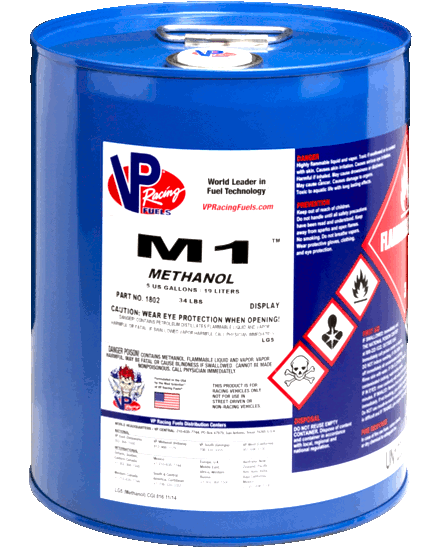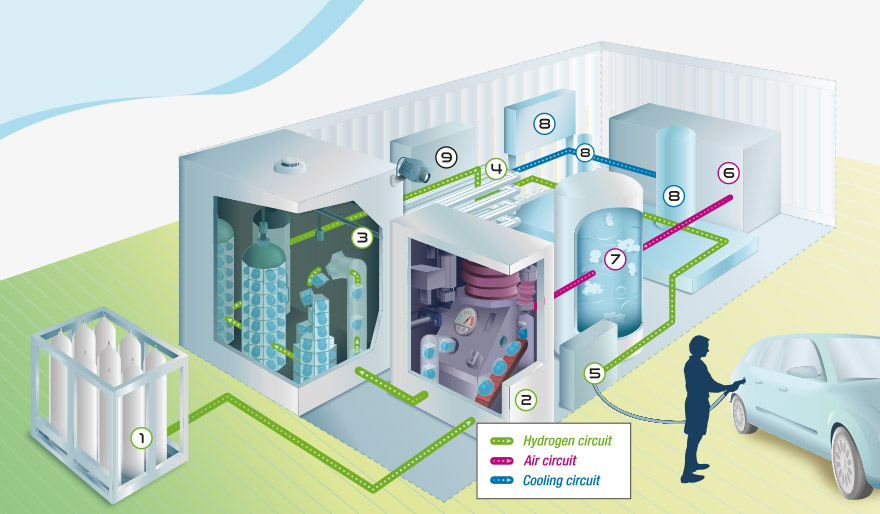|
METHANOL
Please use our A-Z INDEX to navigate this site where page links may lead to other sites or see HOME
|
|
|
Hydrogen power is the next stage of sustainable development for electrics, by extending range significantly for passenger vehicles and making the practical operation of long range heavy goods vehicles possible. But what about when a fuel cell breaks down? Roadside recovery will take you to the nearest garage for a conventional FCEV, but with the SmartNet™ Universal system, you can have a replacement fitted in a couple of minutes and be back on your way.
Methanol, also known as methyl alcohol, wood alcohol, wood naphtha or wood spirits, is a chemical with the formula CH3OH (often abbreviated MeOH). Methanol acquired the name "wood alcohol" because it was once produced chiefly as a byproduct of the destructive distillation of wood. Modern methanol is produced in a catalytic industrial process directly from carbon monoxide, carbon dioxide, and hydrogen. The boiling point of methanol is 64.7 °C.
Hydrogen based fuels are gathering support as a potential replacement for fossil-based fuels such as petroleum, diesel, coal, oil, and natural gas - that are subsidised. But there is as yet little in the way of an infrastructure for hydrogen - and no subsidies - as yet for renewables.
In 2019 Europe had 177 hydrogen stations at the end of the year, 87 of which were in Germany. France is second in Europe with 26 operating stations. The UK has around 14 (in 2021) but will increase faster than the demand for hydrogen to ensure an adequate hydrogen refuelling network coverage allowing FCEV sales to a broader market.
Putting that into perspective, there are no ammonia or methanol service stations. Not even at the consideration or planning stages. In the words of John McEnroe: "You cannot be serious."
The cost of 1,000 litres is around £1817 pounds in 5 litre containers. So £1.82 per litre, against £1.58 for petrol and £1.65 for diesel at the pumps. The cost of fuels varies with geographical location and delivery charges.
Buying in small quantities makes methanol very expensive as a fuel compared to diesel and petrol. More than twice the price in real terms.
The cost of methanol in bulk is pending....
Methanol is typically supplied in 5 and 25 litre containers. But for service stations and dockside transfers, it can be supplied by the tanker.
A proposed Hydrogen Refuelling Station by Air Liquide, where hydrogen is made from water on site, compressed and stored in cylinders before being dispensed to FECV customers. These HRS's can only service hydrogen powered vehicles - and there is no load levelling ability. For that you'd need our Universal Smart Batteries.
Typically, hydrogen is delivered to a fuelling location in the same way as it is distributed to industry: in pressurised tanks on lorries. However, at suitable sites hydrogen can be produced on-site by electrolysis, in the best case with the aid of renewable electricity obtained via direct coupling (wind/solar), or through grid-balancing services.
Methanol is the simplest form of a hydrocarbon, one oxygen atom attached to simple methane molecule. Hence it is combustible. Methanol is one of the largest manufactured trading commodities after oil, and has about half the energy value of gasoline (but its high octane rating pushes this up to 70 percent). It is a liquid at room temperature and would therefore fit into the present gasoline infrastructure — as opposed to electricity, which requires the development of new delivery systems.
LINKS & REFERENCE
https://www.chemicals.co.uk/methanol https://www.chemiphase.co.uk/methanol-99-85-methyl-alcohol-methanol-fuel/ https://www.brenntag.com/en-gb/ https://williamsperformance.co.uk/products/vp-racing-m1-methanol-18-3-litre https://ec.europa.eu/
Hydrogen powered vehicles are becoming more popular, especially buses in cities, where diesel particulates are choking the population and causing cancer. There is an abundance of clean wind and solar energy that can produce green hydrogen, something that at the moment is not happening.
Please use our A-Z INDEX to navigate this site or see HOME
This website is provided on a free basis to promote zero emission transport in Europe and Internationally. Copyright © Climate Change Trust & Universal Smart Batteries 2022. Solar Studios, BN271RF, United Kingdom.
|





